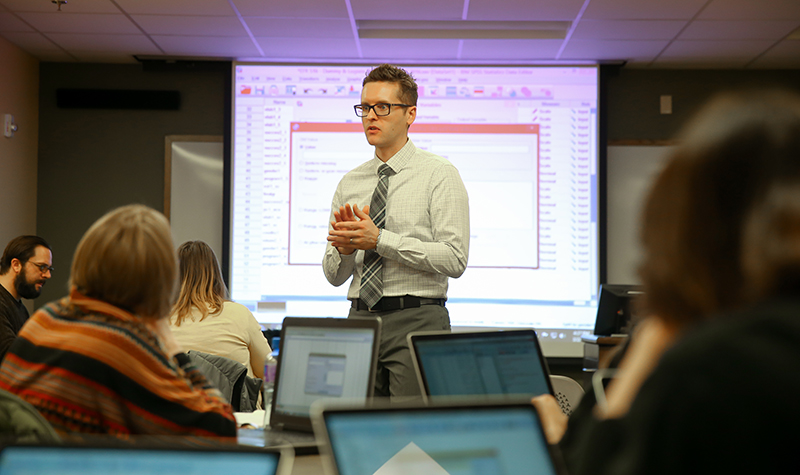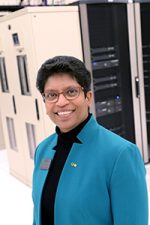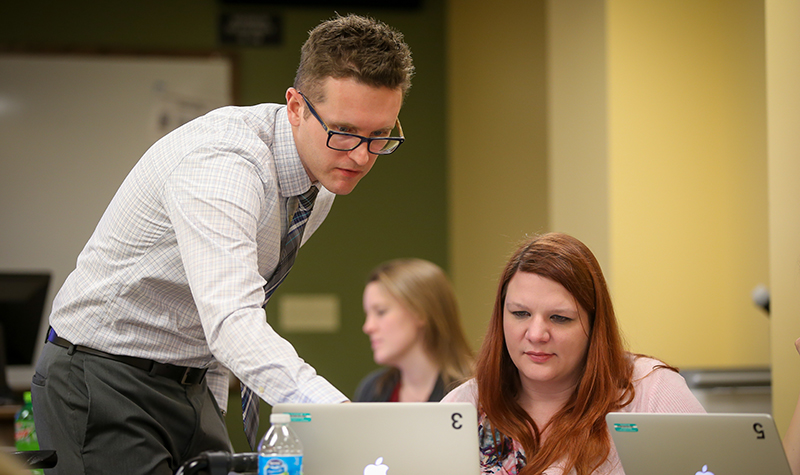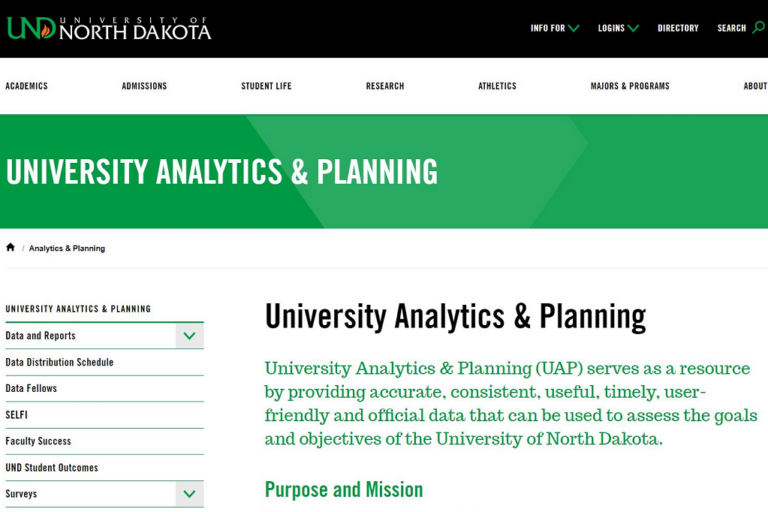Future literacy
New program from College of Education & Human Development equips educators for the data age

Rob Stupnisky sees the field of education going through a transformation not far off from other domains, such as health, business and sports.
Data – lots of it – is collected at every stage of a student’s career, from entering kindergarten to applying for university graduation, said Stupnisky, associate professor of educational foundations & research.
“So, all of this data is being generated,” he said. “But few people have the expertise to figure out how to look at it and interpret it.”
A 12-credit online graduate certificate—Learning Analytics—from the College of Education & Human Development aims to address data literacy from the perspective of the classroom. Its four courses intend to provide the tools to ask applicable questions, find data, organize it and analyze it to show patterns through visualization.
Stupnisky is working with the Grand Forks School District to understand what data K-12 schools are generating in the classrooms, what questions teachers and administrators have that data can address and developing this program to suit those needs.
“Everyone wants to help students succeed,” he said. “Data analytics is a new angle we want to help people capitalize on.”
He says this increasingly in-demand skillset and professional field of learning analytics is about leveraging information to better understand what’s happening with students. Comprehensive data sets, in the right hands, can inform decisions regarding curriculum and improving student outcomes.
Better prepared
Madhavi Marashinge, chief information officer of the University, took the first course of the certificate this past fall, when it was first offered.

She works with data on a daily basis in making decisions that steer UND from an administrative level.
“The main reason I enrolled is I like to learn,” Marashinge told UND Today. “And analytics is a very highly sought-after field now, simply because we have so much data.”
Her extended reasoning for enrolling aligned with Stupnisky’s purpose for the certificate: once the University analyzes the data it receives from student information systems, like Blackboard and Starfish, it can be better-prepared to help students succeed.
“That’s what we are here for,” Marashinge said. “It’s about how we can help them and be proactive as educators.”
If a particular group of students is having difficulty, it can be safely assumed that a similar group coming along may need additional help, she says. The beauty of analytics is getting ahead of the curve.
Marashinge recommends the certificate to anybody who is already working with data, and to faculty who can receive training in how to retrieve and interpret information about their courses and students. She describes learning analytics as a hot field with plenty of jobs on the way.

Piece of the puzzle
When asked about his background in the area, Stupnisky reasons that nobody has a background strictly in learning analytics – it’s just that new.
“The International Society of Learning Analytics only started in 2011,” he said, adding that he’s attending their ninth conference in Tempe, Ariz., this April. “I don’t think anyone has a background, but there are probably a lot of people who come from education, who have data, and they want to know what to do with it. There are also probably people who have experience with data analysis, but they haven’t looked at opportunities in education as much.”

Stupnisky pointed to a job market analysis by Hanover Group that showed learning analytics jobs increasing at a rate of 9.7 percent in North Dakota, opposed to 4 percent for most other occupations.
The graduate certificate is also a piece of the puzzle in addressing one of the five Grand Challenges: effectively, efficiently and ethically produce, manage and securely use information in the age of big data. Psychology has issued a similar certificate in behavioral analytics, and Computer Science has their BS/MS program in data science and analytics.
Vice Provost Jeffrey Holm says that in modern society, data literacy is as important as any other literacy. Every day people are faced with information citing statistical data, and the ability to critically evaluate such information is paramount.
“In education, and working with individuals, how do you help an individual student? You have to be able to get past that gut feeling, stereotype and look at information objectively,” said Holm. “That’s what analytics helps you do. It’s another tool to help educators.”
Changing classroom
Stupnisky says such tools are especially useful as online education becomes more prevalent.
“If I were teaching a class of 25 face-to-face and I notice a student at the back constantly furrowing their brow, asking people next to them questions, I would know that student is having trouble or my curriculum wasn’t clear,” he said. “When you’re teaching an online class with more students, those indicators aren’t in front of you – how do you really know?”
By being able to see how students interact with the coursework, alerts could tell instructors that a student needs more attention, or perhaps that the curriculum isn’t working. Stupnisky says that applications such as UND’s Blackboard and Starfish help produce such data, but more people need to know how to find it and what to do with it.
In implementing the certificate, Stupnisky says the department wanted to make it approachable for both K12 and higher education settings. Enrollment solely requires a bachelor’s degree and doesn’t assume prior knowledge of education or analytics fields. The courses are fully online, so students can enroll from anywhere, complete the work as their schedule allows and complete the program in 12 months. Students are trained to use a free, open-source software, called R, for data analysis.
“We’re looking for anybody in an education setting who has access to data, who needs to do something with it, and would like to develop some skills to do it as best as they can,” he said.



